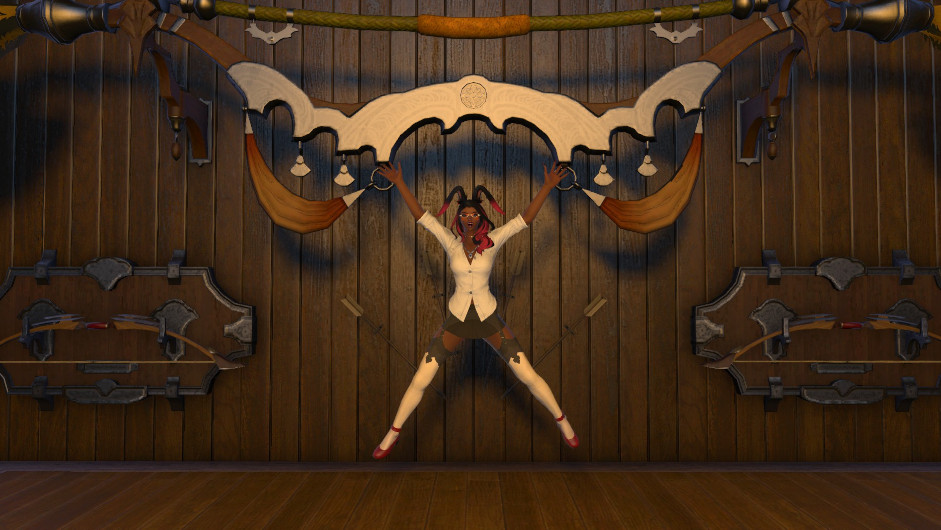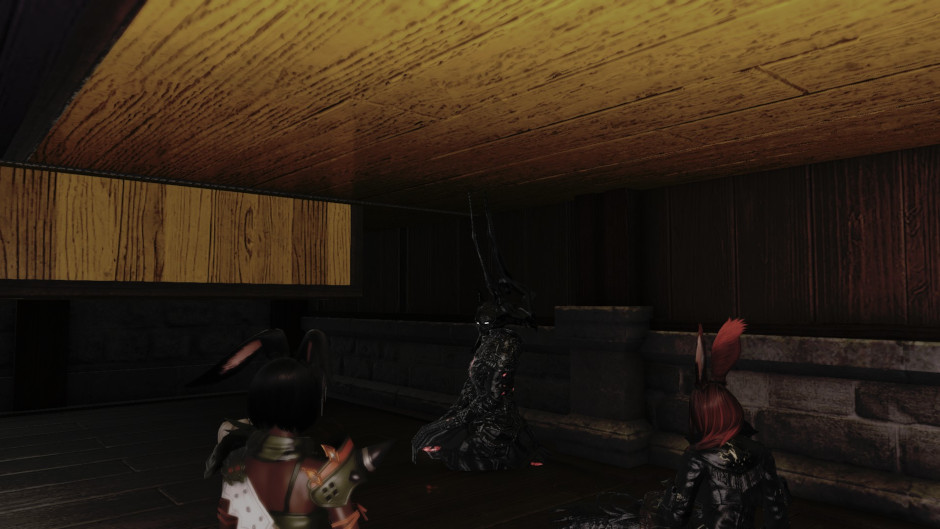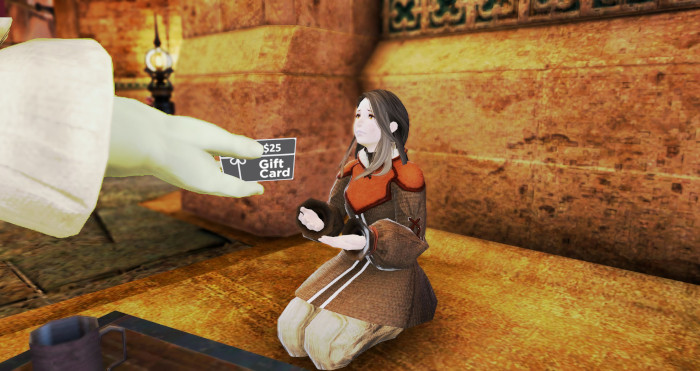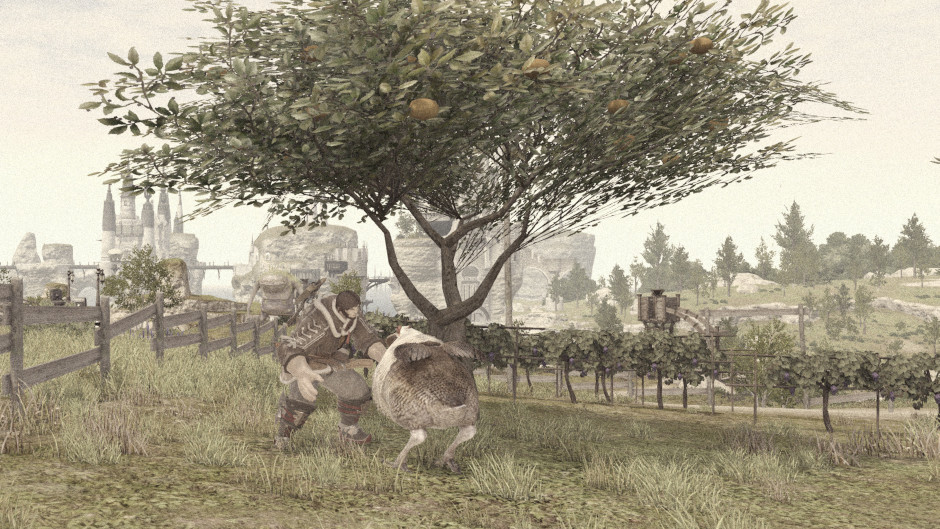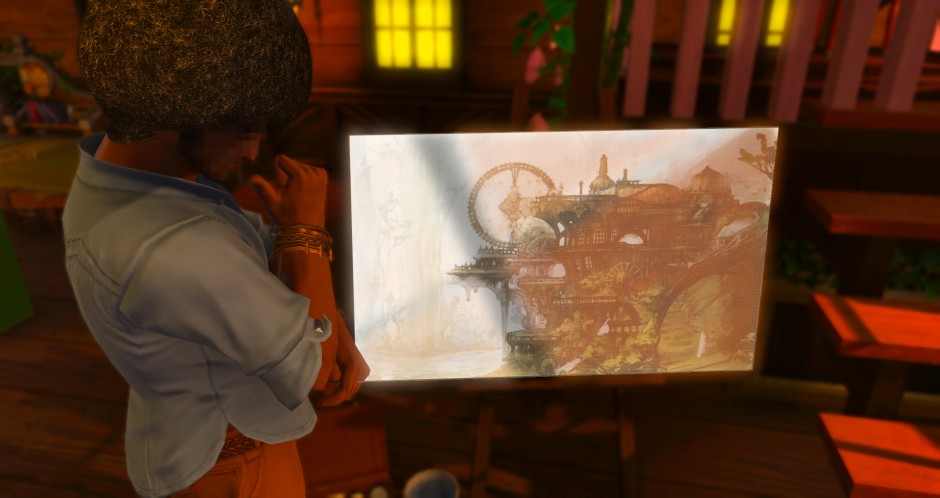A long time ago, I went into a noodle house. The atmosphere was perfect. It was not anything overly fancy, just some scattered tables and chairs, stools by a counter, TV playing some drama for people to passively pay attention to as they ate. It was quaint, and the smells were perfect for encouraging an appetite.
I was totally ready for the experience I was being primed for. One of the specialties was even something I was excited for, delicious udon. Of course, I ordered that as soon as they asked, and while sitting there taking in my surroundings, I let myself fall in love. Then my food arrived and everything crumbled away.
The aroma was a little pungent. The TV was too loud. The furniture was flimsy and kind of dirty. And sitting in my bowl were thin, spaghetti-like strands in place of the udon I was expecting. As it so happens, this was a regional take on the thicker udon I was hoping for. In retrospect, it was fine. The taste was alright and maybe I was being overdramatic about the whole experience, but the build-up and eventual letdown tarnished my time there.
Whether we are aware of it or not, whether we accept it or not, the world is full of wildly different perspectives. To find this out, in most cases, it does not require someone to go further than a neighbor and ask for their thoughts. And when we do find ourselves presented with a separate vision, we can either accept it or reject it, and that is just as valid and okay as having a distinct thought in the first place.
So, then, with all this talk of acceptance, let us take a look at the issues of adaptation. This may be a divisive topic, and I want to make it clear from the start that I am completely open to all opinions on the matter. That said, if you feel the need to tell me that you think I am wrong about anything, all I ask is that you explain why.
Today, I am going to stray from Hydaelyn, as we will be examining the fictional works of Avatar: The Last Airbender. Spoilers for everything but Korra, unless I change my mind, in which case I hope I remember to change this part. You’ve been warned!
Avatar: The Last Airbender
Following an ensemble cast from locations the world over, Avatar: The Last Airbender (or ATLA for short), is a tale that covers a range of themes, from friendships to living with the horrors of war. While the characters are recognizable as themselves from start to finish, one would have a difficult time making the argument they are the same at the end as they are when we first meet them, some noticeably more than others.
Importantly, every character followed closely has strong personality traits, both positive and negative, that are challenged. When a character is given this pushback, they are also provided the chance to take in a new idea and use it to shape their views, or they may stick to what they believe in and continue down their path. This is vital to the story as it provides conflict and growth, things that keep the audience invested in their lives.
We care about these characters, even the antagonists, because we take away an understanding of who they are and how they will act.
One prominent example is that of the main character, Aang. Our introduction to this young monk (and titular Avatar, the last Airbender) shows him trapped in ice. Eventually, it is revealed that he was stuck in place for one hundred years and that he wound up in this predicament while fleeing his responsibility.
In this world, the Avatar is a reincarnated being with the unique ability to master the four bending elements (other benders are restricted to a single element), bridging the physical world and the spiritual world, and as a result, is given the burdensome task of maintaining balance.
However, the Avatar is also a person with thoughts and feelings of their own. They can seek guidance from those around them and even connect with their past selves, but ultimately what they do is up to them. Avatar Aang is young when his fate is told to him by his people and he wants to reject it, fleeing his home rather than immediately taking on his duties as Avatar. Regrettably, coinciding with his absence, the Fire Nation attacks his people, killing all Air Benders in the process, then proceeds with a war of conquest and colonization of the other nations.
When Aang comes out of the ice, the war is ongoing and it has left the world weary and broken. Some blame him for the state of things, but more crucially to his character, he blames himself. Even so, he does not rush to right what he considers his wrongs. While he does help others when he can and intervenes in injustices he sees, it takes a series of escalations for him to understand how important it is for him to succeed in his mission.
As the series continues, we see him distracted less and less, focusing on fully realizing his abilities. This all comes to a head when he meets Guru Pathik. Aang has spent much of his time up to this point learning that he must face his problems and Guru Pathik’s assistance acts as a final test for him.
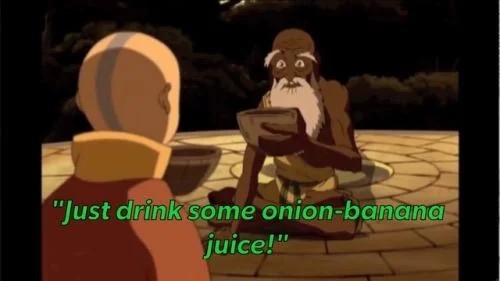
The Guru’s teachings will give Aang control over the “Avatar State,” a powerful form that allows him to tap into the cosmic energy of the universe and makes him an unstoppable force. We had seen this previously on several occasions and while Aang was indeed powerful, he was wild and attacked anything as though he was a threatened beast. To end the Fire Nation’s war, it would be imperative that Aang be able to use this power and keep his head.
At the final step, Guru Pathik tells Aang that he must let go of his romantic feelings that had blossomed for Katara. At the start of this journey with the Guru, it was explained that once the process began, if left unfinished, Aang would be unable to access the Avatar State entirely. Despite knowing the consequences and that he would need full control over the Avatar State, he refuses, running away again. Avoidance continues to be his flaw that he cannot quite overcome.
Eventually, his failure with Guru Pathik pushes him into a corner and he is given no choice but to abruptly complete the steps in the heat of battle. The risk taken here allows for his opponent, Azula, to strike a critical blow against him, nearly killing him. When he finally recovers, he has a much more bleak attitude. This leads him to make some foolish decisions, now overcompensating for his previous evasions. Over time, his demeanor softens once more, and he becomes open to help and fun again, but he is now driven by his purpose, determined to face the Fire Lord and end the war.
It is important to remember, though, Aang is a child. It is not until he and his companions are almost in place to take the final steps in their plan that he is faced with the question of how he will stop Fire Lord Ozai. Ozai is a single-minded villain and Aang is forced to come to terms with the fact that defeating him in combat will not be enough to stop him.
However, Aang’s people believed killing is wrong. So wrong that he cannot justify taking Ozai’s life. He leaves his friends (though not entirely willingly) and spends time meditating and discussing the issues he is facing with Avatars from his past. They all advise him to put aside his personal beliefs and do what is needed for balance.
He rejects the advice of all previous Avatars in hopes of finding a solution. Perhaps there is the additional pressure of being the last of his kind, an unspoken need to maintain his culture in whatever ways he can, but it is clear he cannot stand the solution he is given. It is at this point his evasion finally becomes a strength.
While it can come across as a bit of a narrative convenience, Aang was on the back of a massive god-like creature known as a turtle lion. As it so happens, the turtle lion can also tap into cosmic energy and when Aang presents his dilemma to it, it grants him the power to take away Ozai’s ability to firebend, a solution that will cripple his ability to continue his war without going against Aang’s deeply rooted need to do so peacefully.
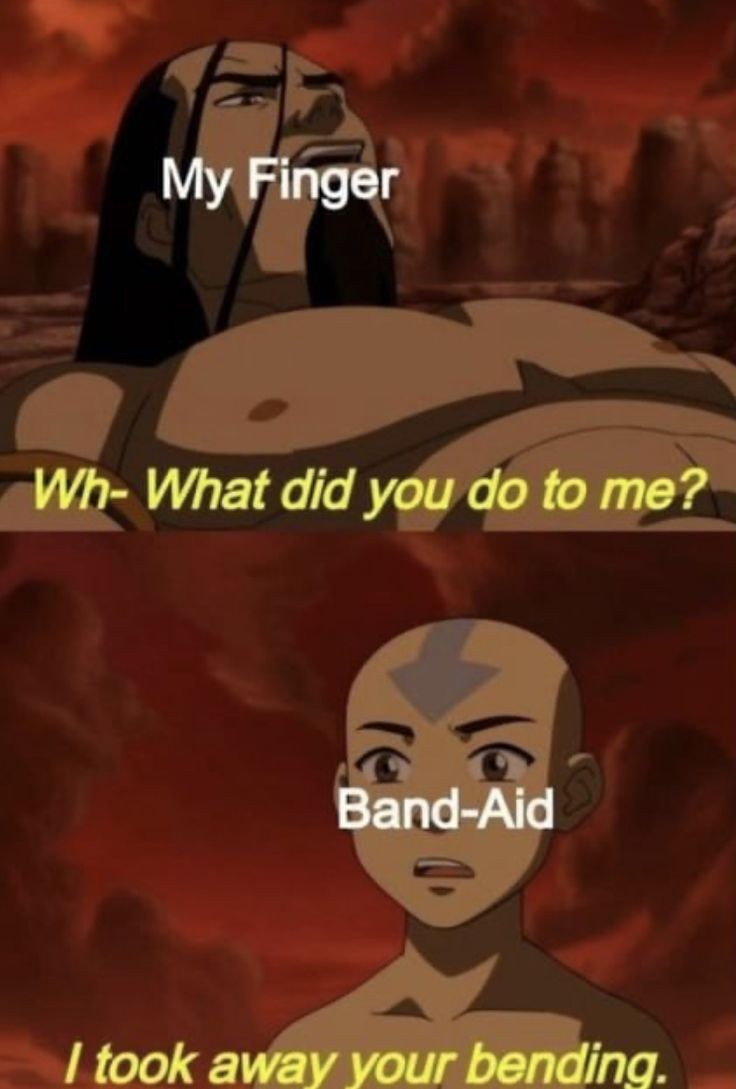
This was a lot for one example of a character trait. I likely could have saved us all a lot of time with the summary of “Aang is flawed due to his evasive nature.” I felt, though, that it was important to go into more detail to really get a sense of why it was a problem for him and how it eventually became a good thing. This long singular example shows quite a few different things, but critically, it speaks to the characters having traits that are challenged and the results of those challenges, while also demonstrating how vital those traits are to the story as a whole.
For Aang, his evasive nature is a part of him, not something he can solve and we never see again. His struggle with it informs his actions throughout the series. The same thing can be said for every single character. They all have traits that are not only tied to them, but that actively take a role in shaping the plot.
Struggle is external, but it is also internal and the understanding of this in conjunction with the growth of the characters makes them relatable on some level. What’s more, the characters are strong enough on their own that in a different scenario they would be just as compelling. If one were to remove these character traits, however negative, it would result in an apathetic response to them.
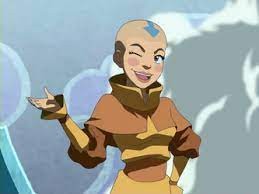
This brings us to the first adaptation we will be looking at today. Coming out just a few days ago (or more if you are reading this in the future (or years if… well you get the idea)), Netlfix’s Avatar: The Last Airbender (NATLA for short) is quickly becoming a bit of a divisive topic among fans of the series as a whole. Some are singing its praises, glad to see the characters and locations they have loved for so long given new life. Others feel disappointed in how aspects of the show are handled. Frankly, I find myself in the latter section.
Netflix’s Avatar: The Last Airbender
I say this with as much love as I possibly can: Please enjoy things if you want! You should never have to feel bad about liking something, even if others do not. In the same vein, it is okay to dislike things too! No matter what camp you fall into, my intent is not to convince you that this is something you should or should not like.
Rather, I want to examine NATLA’s writing to better explain why I feel it is not a strong show. I like a ton of “stupid things that are bad” so believe me I am not on a high horse here. If you do not believe me, ask me about the 1993 Mario movie sometime.
Again, this is going to contain spoilers I am sure, so if you want to stay fresh going in you can read this summary and then skip the in-depth portion. NATLA has several flaws, but one of the largest is the characterization of its cast. All characters have undergone changes, but something consistent for them is the removal of negative traits, such as Aang’s evasive nature. This results in a cascading effect that causes several issues with the narrative. We are now going to get into details, so click here to avoid spoilers.
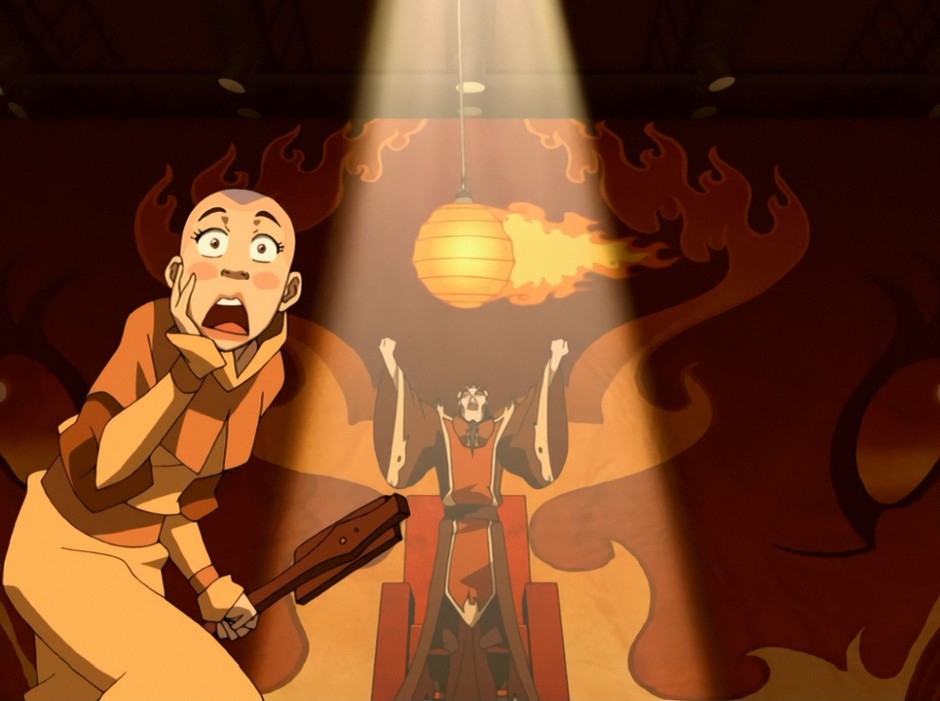
Some might think it is unfair to compare an adaptation to its source material. I tend to agree somewhat, so I went into this show thinking of it as something entirely separate. This is NATLA, not ATLA. I should expect new things and be receptive to them. Some changes I found unusual, but I tried not to let them bother me.
For instance, the opening depicts the Fire Nation’s attack on the Air Nomads. In ATLA, this genocide was something hinted at, but we did not really learn of it until Aang discovers it and it allows us to be just as shocked as he is. Seeing it in advance takes some of the sting of that moment of discovery out, but it is not vital to tell a story in any particular order. Changes like this are okay, though a little misguided in my opinion.
What I found egregious, though, was the treatment of Aang. No longer a goofy kid who plays around (though he does practically turn to the camera to tell us he is), this Aang is very serious, almost solemn. I thought this might be an interesting take (I was wrong - more on that later), but one change they made did not sit well.
Much like in ATLA, Aang leaves the Air Nomads and becomes trapped in ice. However, NATLA’s framing has Aang simply take a ride on Appa to clear his head. He did not make a conscious decision to run away. It seemed he had every intention of returning to his duties after a breather. He even worries over the weather to Appa, suggesting they head home.
I spent a lot of time outlining the importance of Aang’s trait of avoidance to the entire plot and resolution of ATLA. This Aang does not need to be the same as ATLA’s version. In fact, changing who he is can help to make NATLA stand on its own. The issues lie in not simply the removal of this vital component of Aang’s personality, but the negligence in not replacing it with anything.
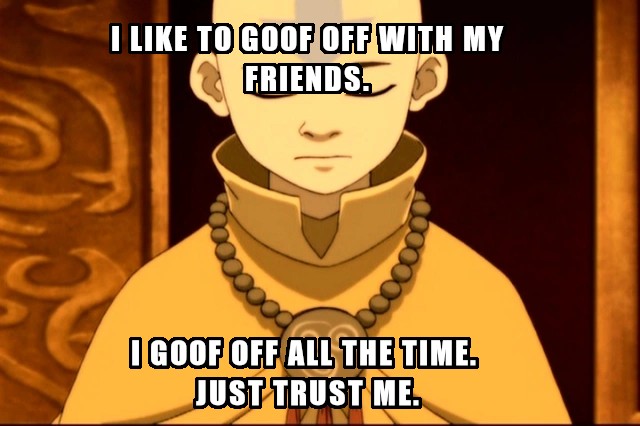
As soon as NATLA’s Aang is brought back into the world, he is adamant about fulfilling his duties. He receives a vision that the Northern Water Tribe is in danger and makes a concerted effort to travel there as fast as he can. Along the way, he and his friends get sidetracked, but the reasons for these other stories are almost always due to an external force rather than a choice the heroes make.
They stop in Omashu for a time and stay because they fall into a spy and terrorism plot as they enter the city. Aang gets further held up by the king after he is captured and released in said plot. When they finally do leave, Aang decides to investigate a damaged section of forest because he feels it is his duty as Avatar to fix the problems of the world. There is no conflict in this, though, and they immediately land and look around.
To better see what has gone wrong, they enter the spirit world and are attacked. This splits the group up again and Aang is forced to take a side journey to seek guidance on freeing them. This journey sees him getting captured again, finally returning to his friends after escaping. Following this, they finally reach the Northern Water Tribe where the season reaches its climax.
During all these events, Aang shows a handful of traits. He is loyal to his friends, he wants to be the Avatar and save the world, and he believes everyone can find a better path. His only flaw is that he feels guilty about being trapped for so long. While this is a start, there are some issues with this being his only negative aspect.
This negative trait is one that is not a part of who he is, rather it is something he only needs to carry for a time and by choice. Since he is so determined to save the world, it will likely be resolved and nullified eventually, whether or not he realizes he is innocent of this blame. Additionally, it hampers his ability to grow as overcoming this guilt will not alter who he is. Aside from his regret about something he could not control, he is essentially a paragon.
Having a paragon protagonist is not necessarily a bad thing all the time. While they remain relatively flat, others grow around them in part due to their interactions. NATLA’s handling of the rest of the cast, though, took this away as well. Katara’s flaw is that she does not believe in herself, something she overcomes in the first episode. Sokka has no flaws and seems to have no hangups, even. We later learn he once heard his dad say he is not ready to be a warrior, but he is one when we meet him so it is hard to consider that even an external issue.
The antagonists, too, are devoid of what made them interesting. Zuko wants to go home but despite the longwinded exposition and characters clearly stating the motivations, he never gives a hint of wanting to restore his honor. NATLA’s Zuko only wants to go home, something that is much less vague than the reclamation of honor that drove him in ATLA.
Iroh, much like this new Aang, is something of a paragon character. His story has already been written and he is very much here for Zuko. Only, remember how I said that Aang was serious, almost solemn? In ATLA, Iroh had been slowly pushing Zuko towards the idea of a better path. Aang would seem to yearn for peace between the two as well, but Zuko never really took what Aang had to say seriously.
In NATLA, though, the two are given much more time to connect and speak calmly. While Iroh is still a great supporter of Zuko, his role as mentor to Zuko’s redemption is taken by Aang. Iroh makes references to tea, food, and music night, but the purpose of his character has been greatly diminished. It seems a running trend in NATLA to have characters without them having much to do.
The thing is, character development and implementation is just one of many issues I have with the show. In terms of writing, a lot of the plot decisions leave strange holes that do not serve the story well. Most notably to me, NATLA’s mechanist character is safe behind the nigh impenetrable walls of Omashu, and yet for some reason, he is still tied to the story of feeding secret weapon plans to the Fire Nation for protection.
I could continue on for a while about characters, though this article might be far too long if I did. Other issues I harbor get more into the nitpicky or the comparison territory, something I would like to avoid as that comes down to personal preference. Instead, I think it is most fair to judge this narrative on its own and it is one that I find fails to create anything compelling, instead acting as a sort of “greatest hits” scene moments from the source material.
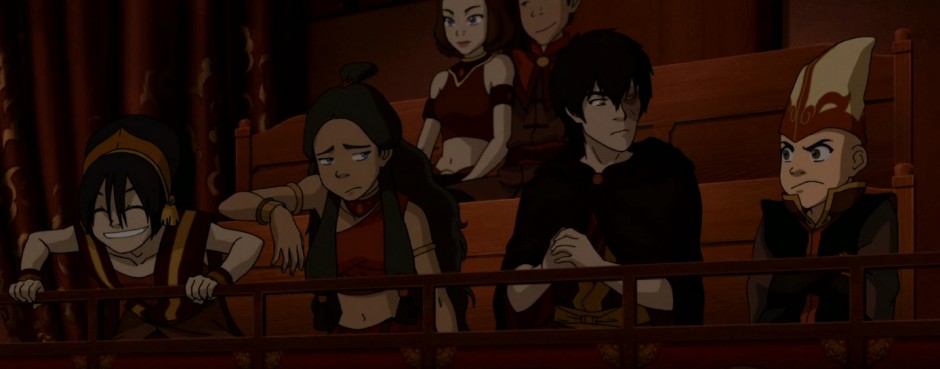
And now it is time to totally alienate myself from everyone. Remember how I said I like a ton of stupid things that are bad? I was not kidding, though I think I can make a case that the other adaptation I would like to discuss is not necessarily all that bad.
This final narrative comparison is on 2010’s The Last Airbender (TLA for short (which is sad because I wanted to say M. Night Sh..a..mmmmmmmmmmmmmm’s Avatar: The Last Airbender or MNATLA for short, with a running gag of having the abbreviations just getting longer and longer and… oh sorry okay let’s continue).
First things first, there will be spoilers for this and yeah no one cares, I know. I also want to address the negative aspects. Pronunciation varies from the source material, which is apparently because the director wanted the words to be pronounced more authentically to the borrowed cultures. Since the casting is a bit… pale… it seems like a weird choice.
I do not particularly care too much about the casting choices (I know crucify me) but I get that and why people take issue. I am not defending it. I just do not really care. Sorry, it does not bug me too much. The acting from the child actors is pretty stiff! Some choreography can be awkward and laughable (though after watching NATLA, laughable was pretty nice). The fight scene in the prison for earthbenders, inexplicably made in an old quarry for some reason, is particularly bad. One guy at the Northern Water Tribe yells “OOOOOOOOOOOOOOOOO” for like 10 seconds. Okay, I think I hit all the really awful parts, if I missed any let me know.
I want to now mention my very special relationship with TLA. Growing up, I had seen glimpses of ATLA while channel surfing sometimes. For whatever reason, it never really jumped out at me so I never watched it.
Fast forward a few years and I am attending my first comic convention! It is fun. I have a nice time. I buy some stupid stuff. And I see a TON of people dressed up as ATLA people. I thought they were Narutos. I was wrong. They were so in love with it and they were not offended, but they gushed a lot. I thought that was nice and moved on with my life.
A few years later, I was on Netflix, bored, looking for something to watch. I saw they had TLA. Remembering how much people loved ALTA at that convention, I thought “Why not, maybe I will fall in love too.” It was… okay I guess. I did not really get it. I understood what was going on, but I had no idea why people were so into the property. So I forgot about it.
A few more years go by and my work bestie tells me I HAVE to watch ATLA. I tell her I saw TLA and it was not for me. She scoffs at me because I am a fool and do not even realize it. TLA is not ATLA. TLA is bad and no good. I agree to try ATLA. At first I feel it is kind of juvenile. But then I see Momo earthbend and I do not care anymore, I love this show.
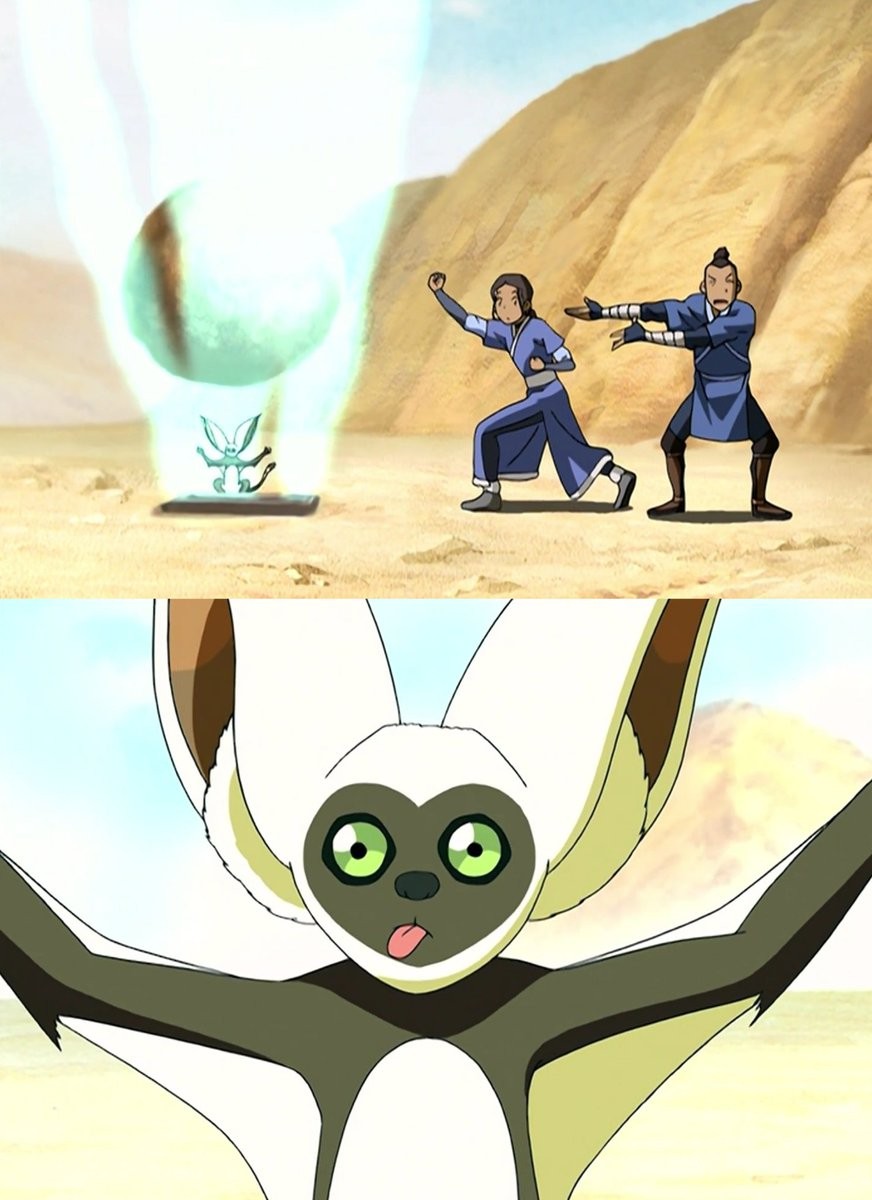
I watch all of it, dive into Korra, oh my gosh what a ride, I had a great time. That movie must have been just the worst! I never revisit it. I even fall into telling people the movie is bad. It put me off this total gem of a show, it must be, right?
I finally convince Babbit to watch ATLA and we go off on it. We watch it all and Korra and it is a great time. We are now Team Avatar groupies and we love it. NATLA gets announced, we are stoked! Time goes on, decisions get made, other shows come and flop, other shows come and smash hit, I am getting wary.
NATLA drops, I watch the first episode. I take two days to think it over. This is unusual, I am a binge machine. Maybe something is wrong with me, maybe I am not thinking about this right. Did I not like it? I am not sure. We watch through the rest and see above, the tip of the Aangburg that are my thoughts on NATLA.
So Babbit says “I am going to just watch the FMA movies.” This has been a running joke between us for a while. They are so bad, but now after seeing NATLA, she thought why not? Then I have an idea. I tell her “No wait, first watch TLA. You have not seen it and I want to know what you think about it after ATLA and NATLA.”
So we sat down and watched it. It was fine, we had fun, we LAUGHED. When we watched NATLA, the only laughing was generated not by the show but by us mocking certain choices. TLA was cheesy as heck, but it was endearing in a way. By comparison, NATLA had come across as cynical, favoring memes and recognizable fanservice over trying to stand on its own.
I say all this because I think it is important to know the full context of how I came to the conclusion that TLA is a good adaptation compared to NATLA. The formats are different, but that lends to the idea that TLA had more care put into its development than the latest iteration of the series.
TLA makes a lot of cuts to the ATLA story. Much like condensing a book into a movie, if one were to consider ALTA season one (Book of Water) similar to a book (OF WATER) then this of course makes sense. Unlike NATLA’s cuts, though, these were not to facilitate reducing location changes, nor were they done without consideration for what cuts would mean.
Small spoiler for NATLA episode 1 ahead.
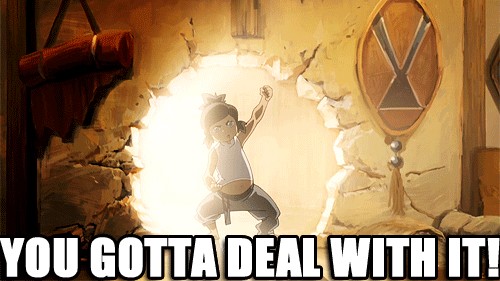
In all versions of the story, Katara learns some waterbending techniques without a master by referring to a waterbending scroll. In ATLA, this is obtained by stealing it from pirates who play a part later in the story as well. In NATLA, Gran Gran walks up to Katara and hands it to her before she leaves the village. The pirates are still mentioned later, though, but they serve no purpose in the plot anymore. TLA handles this quite differently but in a more satisfying way.
When Aang, Katara, and Sokka liberate the earthbender jail (again, inexplicably in aquary, like that is definitely the dumbest thing the movie did and it makes no sense), they raid a locked area filled with confiscated bending-related items, including the scroll. No pirates, but they no longer have any relevance so this is okay. Additionally, in all iterations, the Fire Nation has raided the Southern Water Tribe for years.
While it is a little convenient that waterbending scroll made its way to this prison, it is not out of the realm of possibility, especially considering the prison is not far from the Water Tribe. This is all to say, though, that the cuts TLA makes are in service of keeping the major plot points intact while also keeping the narrative within the bounds of the story they are crafting. The audience does not hear about a pirate side story and wonders what happened because this telling is a tighter interpretation.
Additionally, the characters retain (for the most part) their traits and flaws, allowing for conflict to bloom from who they are, rather than having outside forces act against them to push the plot. Aang is still evasive of his duties at the start. Admittedly, he does decide quickly to return as the Avatar, but considering time constraints, this is not such a major shift as removing that altogether. It is still a part of him and is a problem he can slip into later.
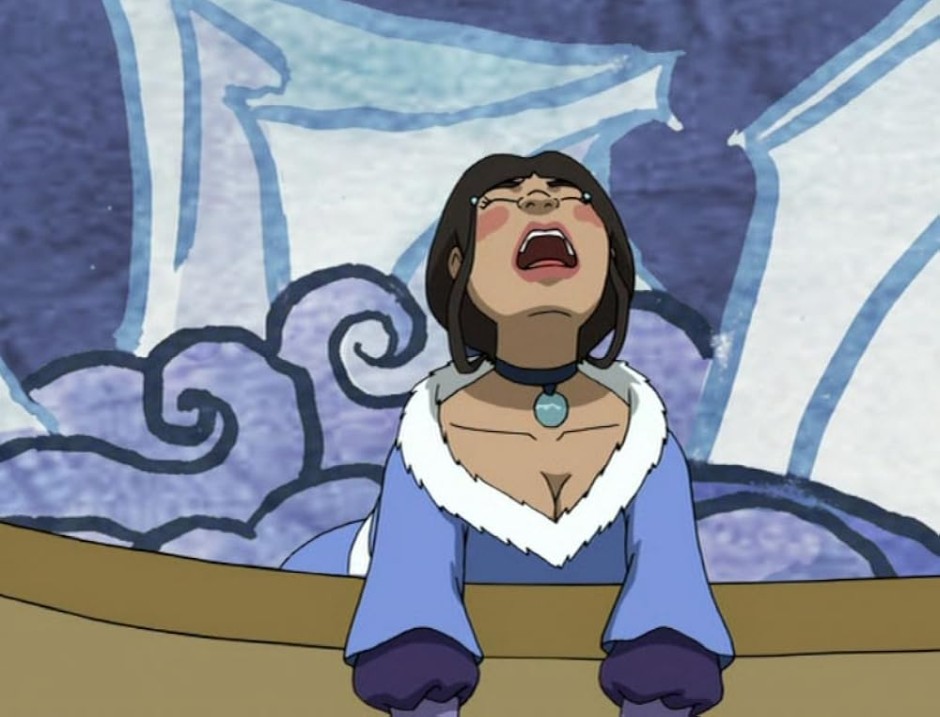
TLA is not an award-winning film, it is not the best adaptation of all time, and it certainly does not live up to ATLA. It is hard to imagine anything in the ATLA universe ever will. However, TLA is not the worst thing ever. It is a fairly competent story with new ideas and takes care with the changes it implements, something that would have shone more brightly had the movie series continued. I am sorry to say, ATLA fans, I do not hate it. After rewatching it, I think I even kind of like it.
And if you do not feel the same way, that is totally fine. Like I said, you can like what you want, please do and do not let me tarnish that. We all have our interpretations of how things should be, whether it is the tale of a ragtag team of kids fighting the power or the size and shape of a noodle. All I ask is that you consider the reasons for things when you make your determinations. Okay, enough time away from Hydaelyn, gotta collect more Mog Tomes!

